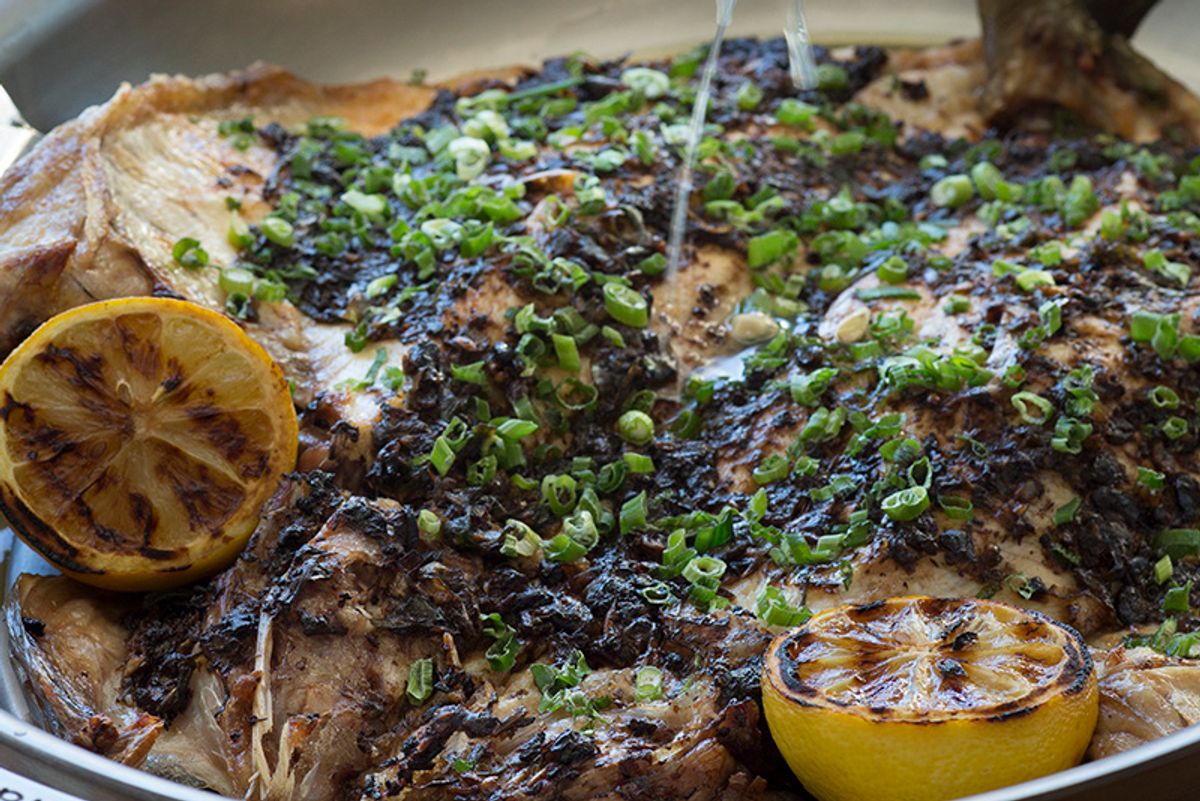In late October, I was on the west coast of Oahu with my wife, taking in the view from an oceanfront cabana at the Four Seasons Resort at Ko Olina. The trade wind rustled the palm fronds and the pale green leaves of the beach naupaka, and an endless procession of deep blue swells pounded the rocky shore with a slow, rhythmic beat.
As if from nowhere, a man appeared, cabana-side, with a tray of the most enticing-looking cocktails. Introducing himself as Dr. Mai Tai (an accreditation verified by his name tag), he advised us that our pineapple levels were out of adjustment, a condition for which he had the perfect remedy. Thanking the doctor for the quick diagnosis, we helped ourselves to the elixir, and toasted to a promising new form of tropical medicine.

The mai tais were excellent and deliciously strong, but as I gazed at the horizon, rather than drifting off into the usual rum-induced daze, I found myself thinking about fishing and farming in the Hawaiian islands, the history thereof, and the question of whether a state that currently imports 90 percent of its food might one day support the kind of vibrant local food system that we enjoyed back at home in the Bay Area. Appropriately enough, this line of inquiry had sprung from the previous night's dinner at the resort's new restaurant, Mina's Fish House, a passion project from the critically acclaimed San Francisco-based chef Michael Mina.
In addition to his eponymous California Street restaurant, which earned a four-star rating from the San Francisco Chronicle's food critic Michael Bauer in September, Mina oversees a group of more than 40 restaurants ranging from an izakaya and sushi bar concept in Boston to an American-style steakhouse in Dubai. One might think his new collaboration with Four Seasons, with whom he has partnered on restaurants in Jackson Hole, Washington D.C. and elsewhere, was simply the product of a restaurateur's economic calculus, but Mina had in fact been dreaming about opening a fish restaurant for nearly two decades.
In the dining room of his Oahu outpost, Mina explained that he fell in love with fish and its versatility at George Morrone's Aqua, where he served as executive chef from 1993 to 2002. "What made Aqua magical," he said, "was that there were no boundaries." The sheer multiplicity of fish, he continued, and the fact that fish and seafood are a part of so many different culinary traditions, somehow liberated the restaurant from the need to hew to a single type of cuisine. "On the menu," said Mina, "we could have a Japanese dish next to a classic French dish, and the media didn't destroy us for it." When he left Aqua to start his own company, he vowed that he would open a fish restaurant at some point. There was a stipulation though. "It's not going to be downtown. I want to have my feet in the sand, looking at the ocean."
Last summer, when Four Seasons—which opened on Oahu in 2016—approached him with just such an opportunity, Mina was beside himself. He knew the island well, having vacationed there religiously for more than 20 years. He also knew that the quality of Hawaii's fish was unsurpassed. "As a chef," said Mina, "you can bring technique anywhere you go. But you can't bring product everywhere you go. Your dream as a chef is opening a restaurant where the very best of that product is right on your doorstep, because you're always going to get first crack at it."
For Mina and his executive chef, Garrick Mendoza, this means wild-caught fish like mahi-mahi, snapper, shutome, opah, opakapaka, and onaga—hand-selected at the market in Honolulu, or better yet, delivered by fisherman, straight from the boat. Farmed seafood also appears on the menu, including yellowtail, abalone, shrimp, and lobster from aquaculture operations in the Hawaiian islands. The pros and cons of aquaculture are a matter of fierce debate, but it's worth noting that centuries before Europeans arrived in Hawaii, ancient Hawaiians raised fish in a multitude of fishponds called loko i'a, of which there were 100 on Oahu alone. Whether the loko i'a had a superior environmental record to that of contemporary Hawaiian aquaculture, I don't know, but it seems a worthy topic for future research.
The insistence on local food isn't limited to fish alone. Mina's Fish House buys as much produce as it can from Kahumana Farm, an organic farm and non-profit organization in the nearby Lualualei Valley that provides jobs and housing for adults with developmental disabilities, and families transitioning from homelessness. During our stay on Oahu, my wife and I toured the farm (something I'd recommend to anyone visiting the island) and were staggered by the variety and abundance of what they grow—from tropical crops like taro, bananas, papayas and dragon fruit, to vegetables like Swiss chard, Chioggia beets, and carrots. Nibbling on one of the latter, I found myself wondering how much of its own food Oahu might one day produce if farms like Kahumana were as numerous as the taro fields which, prior to European contact, occupied all of the major stream valleys on the island.
(Courtesy of Four Seasons)
Four Seasons Resort Oahu at Ko Olina, which opened in June 2016, is situated on Oahu's rugged western coast.
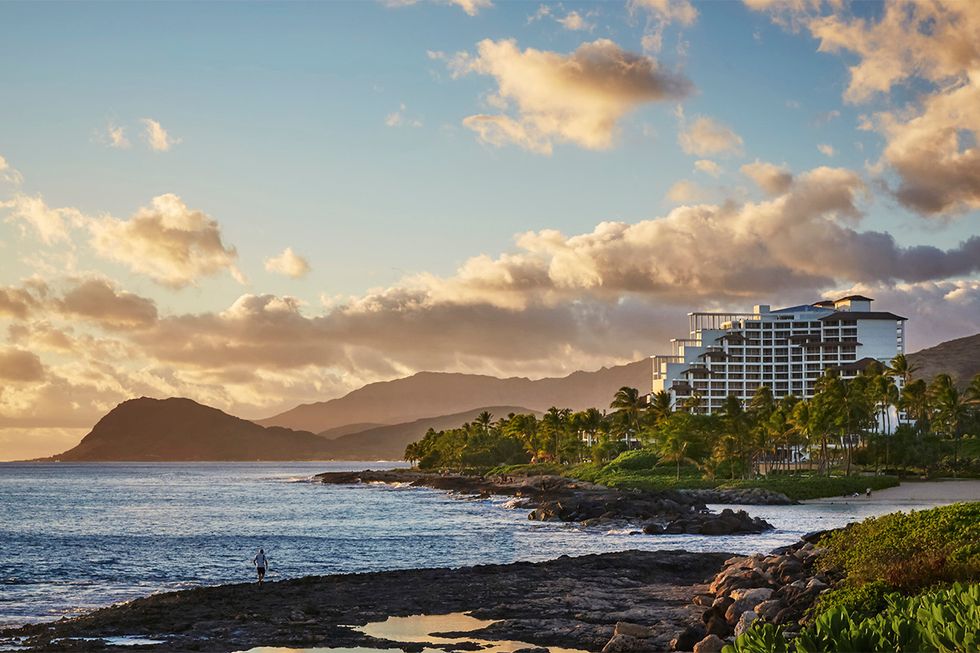
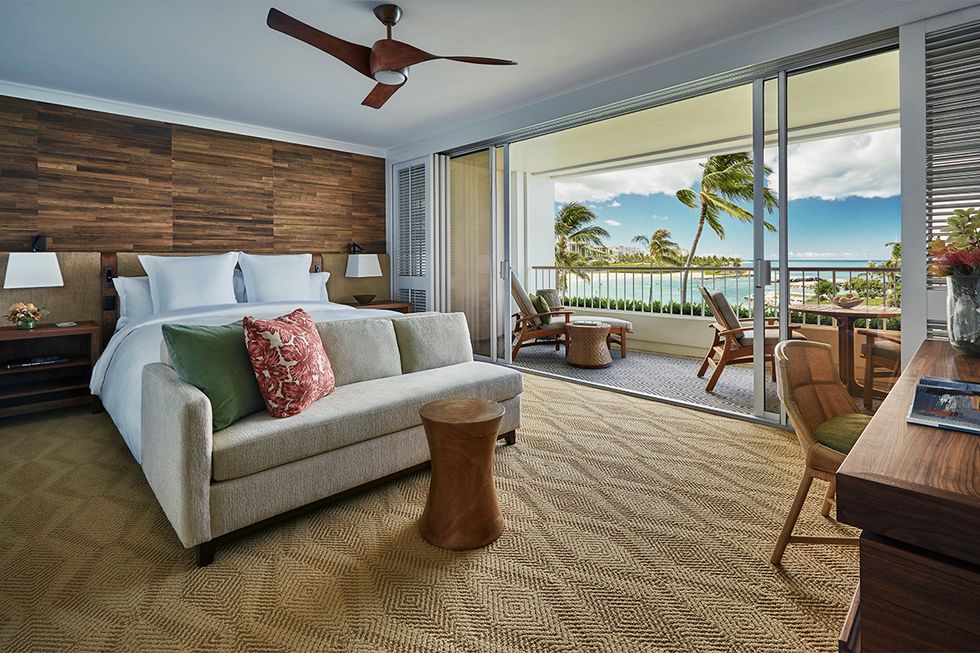
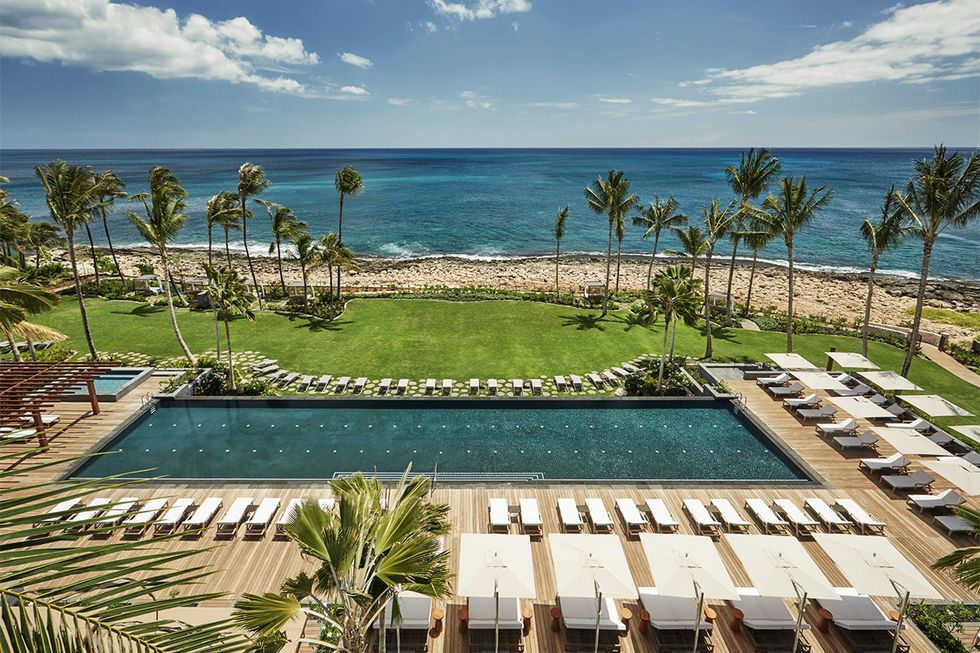
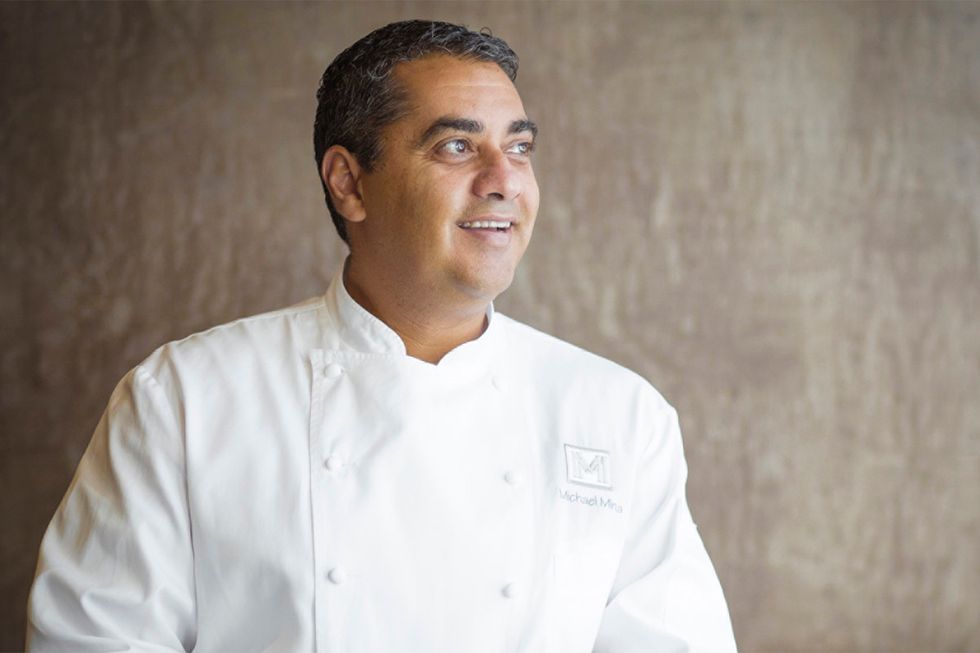
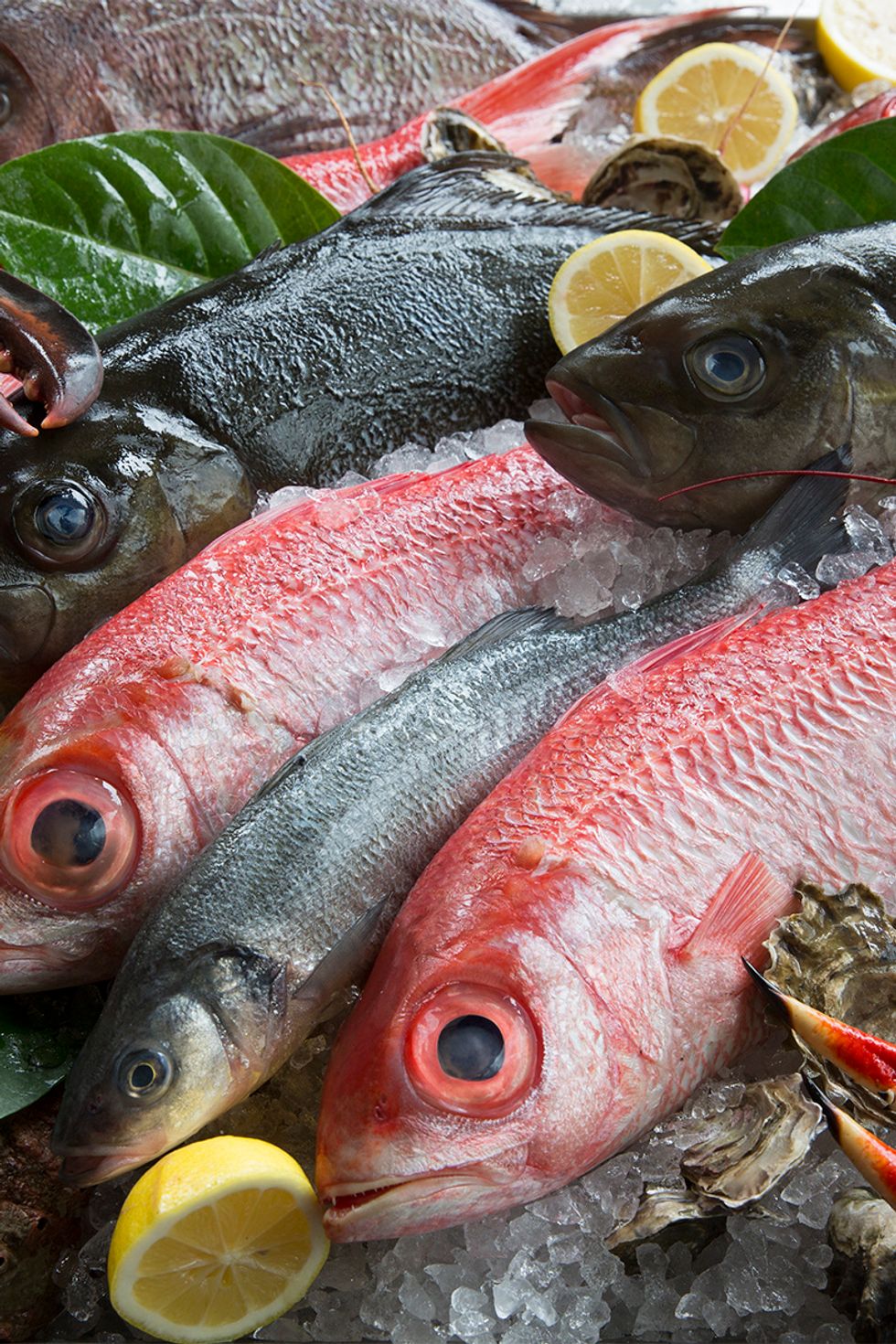

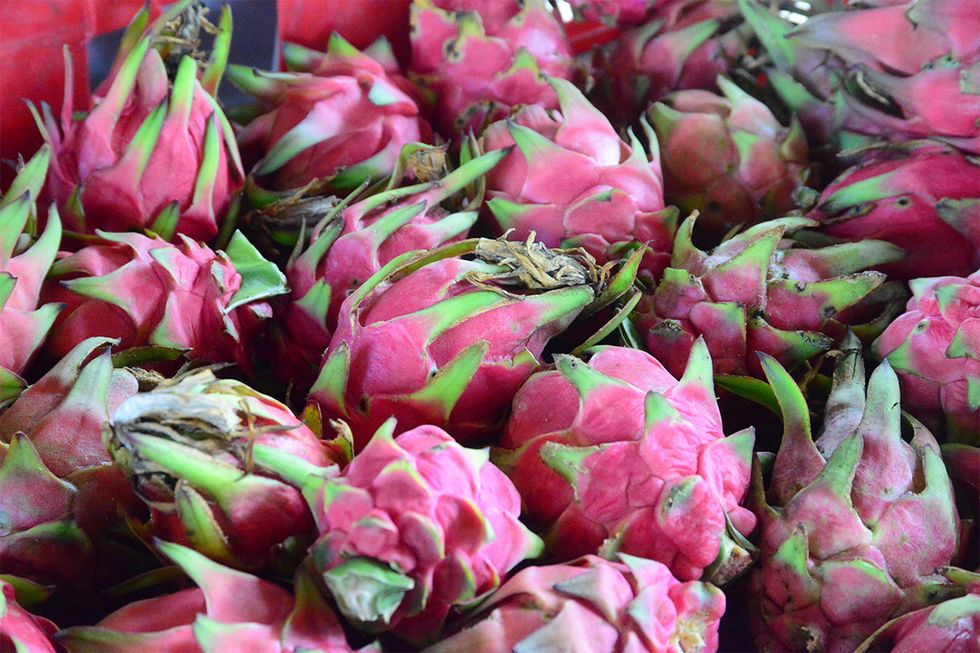
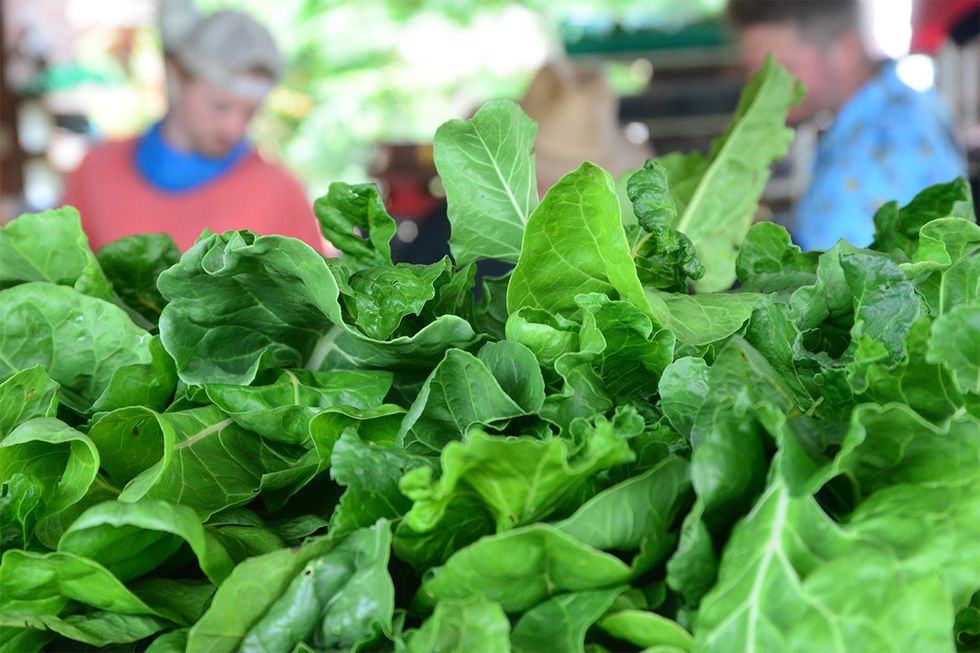
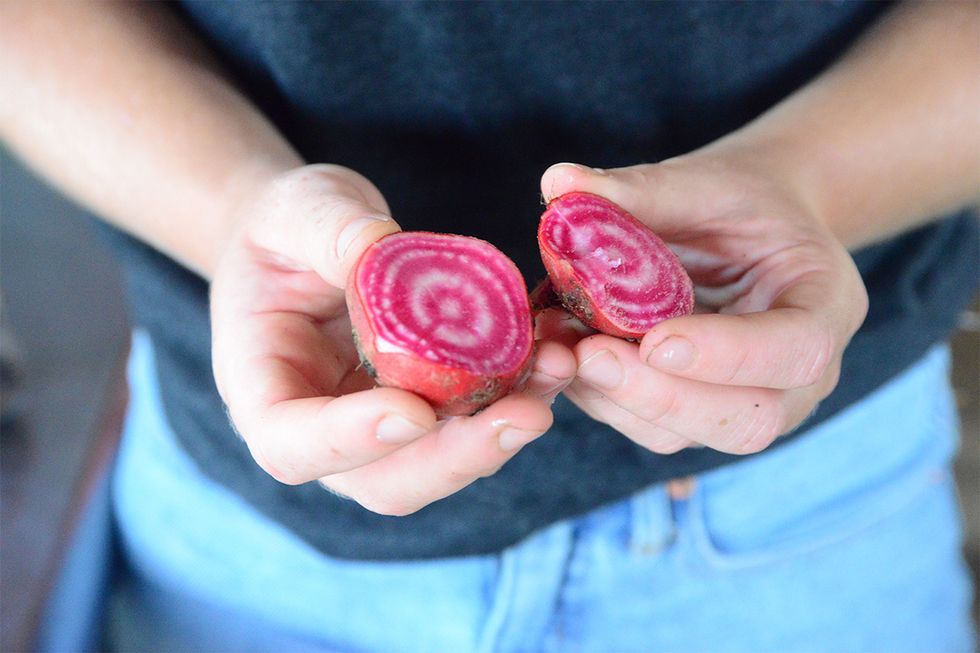
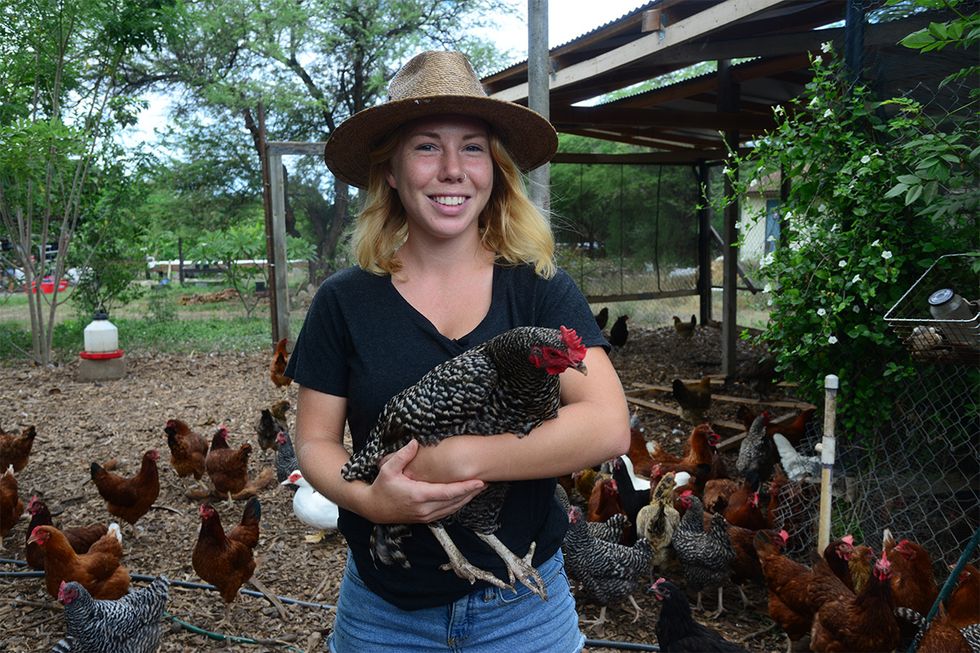
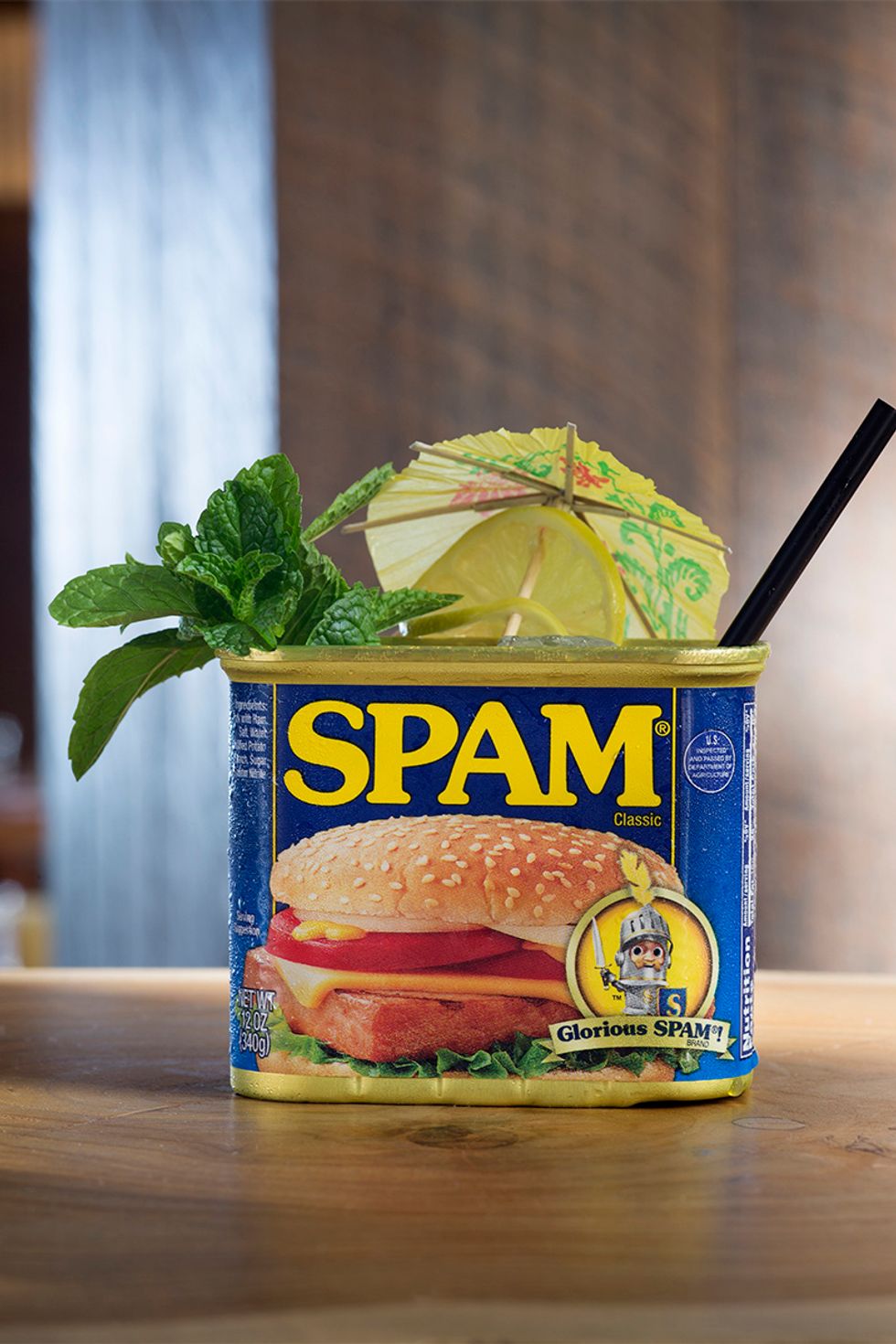
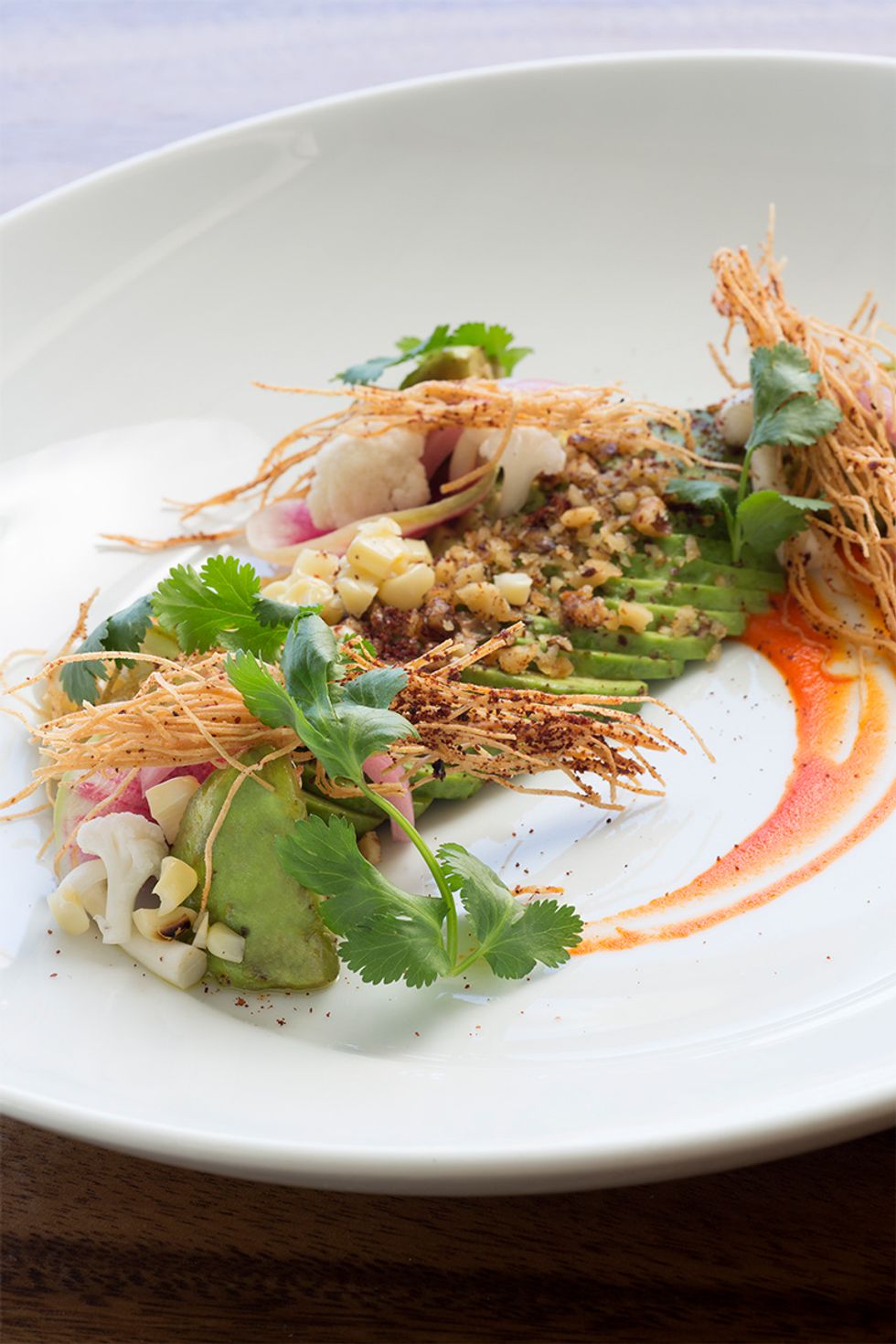
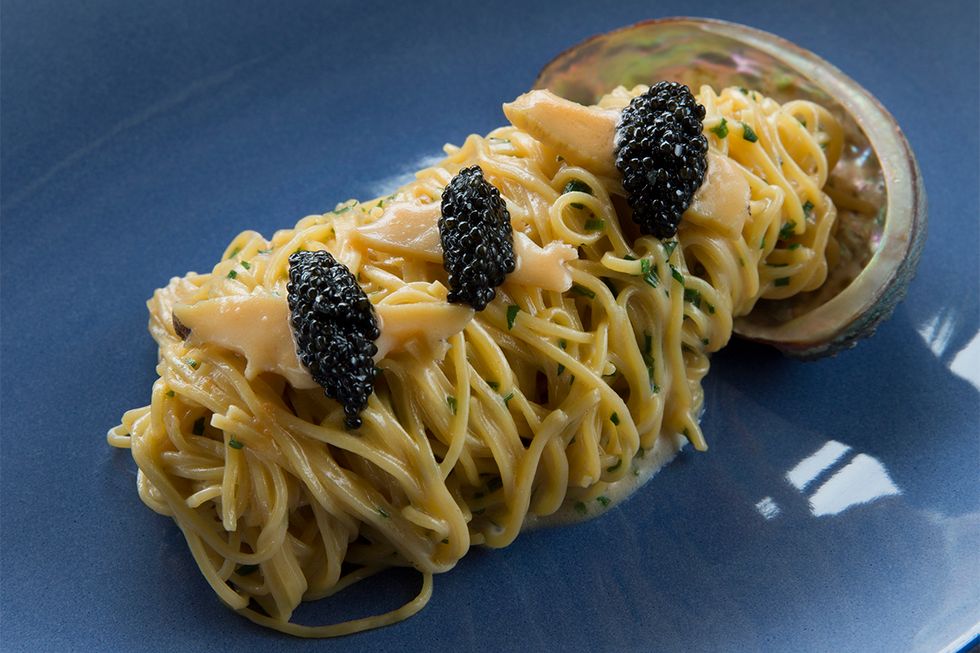
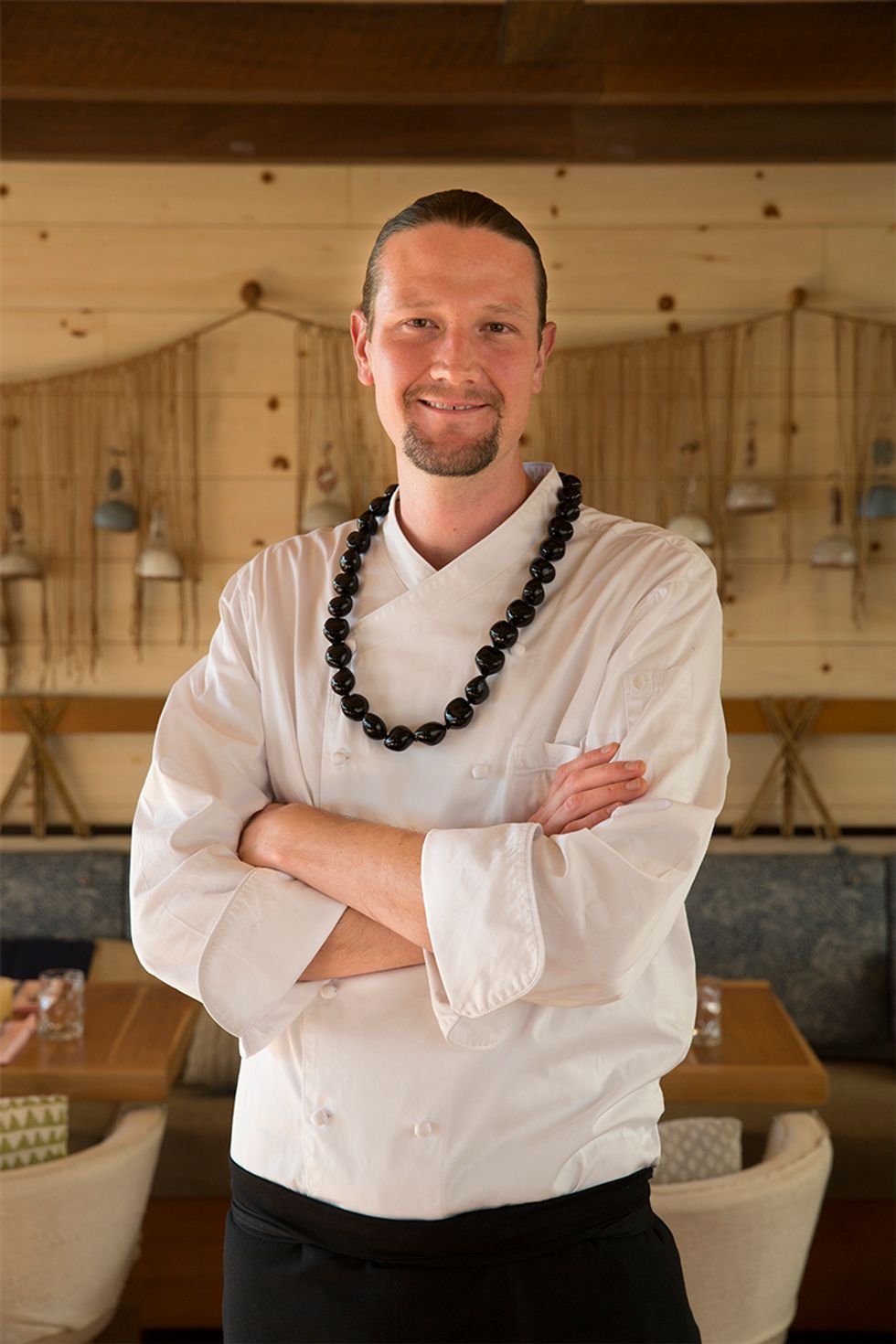
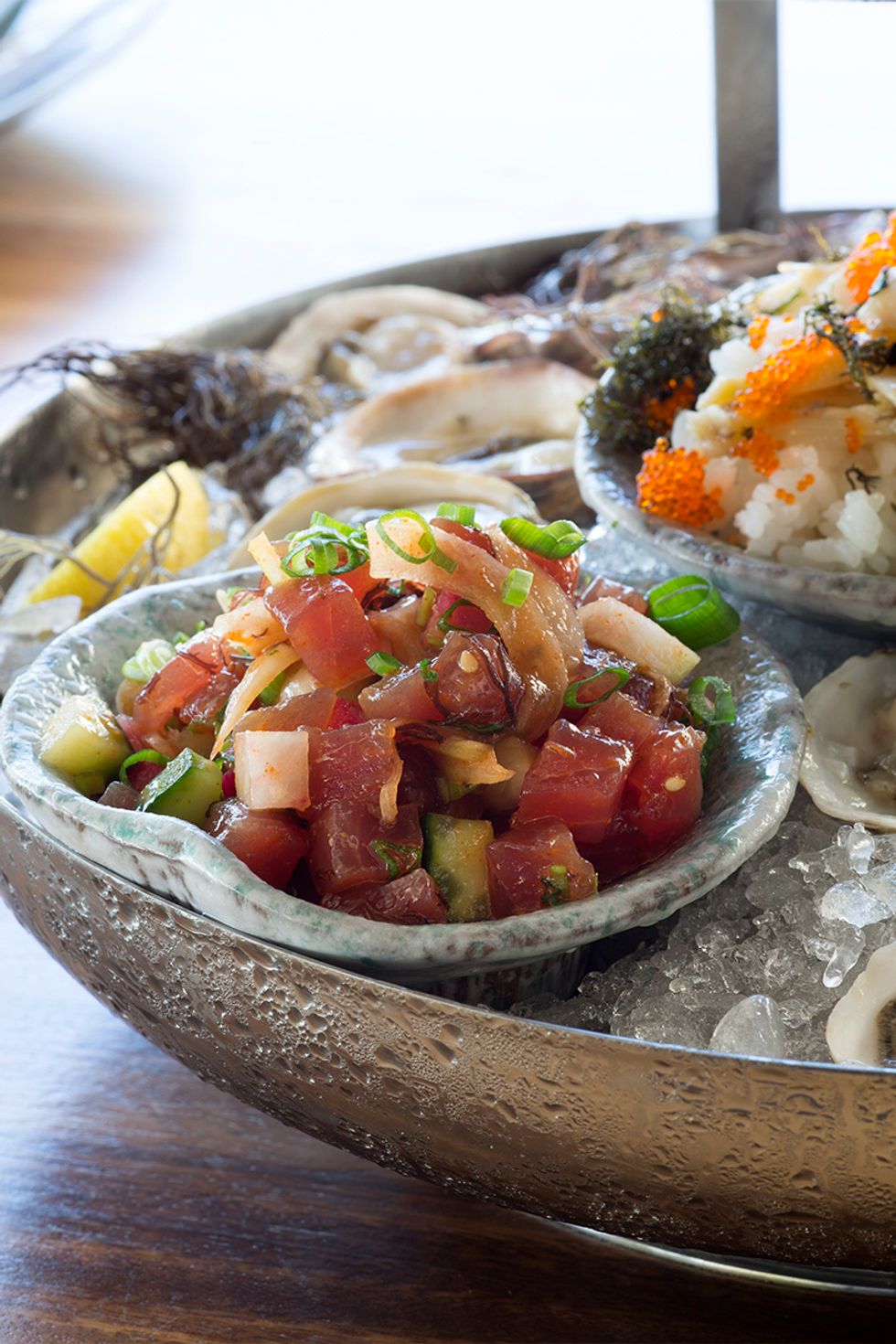
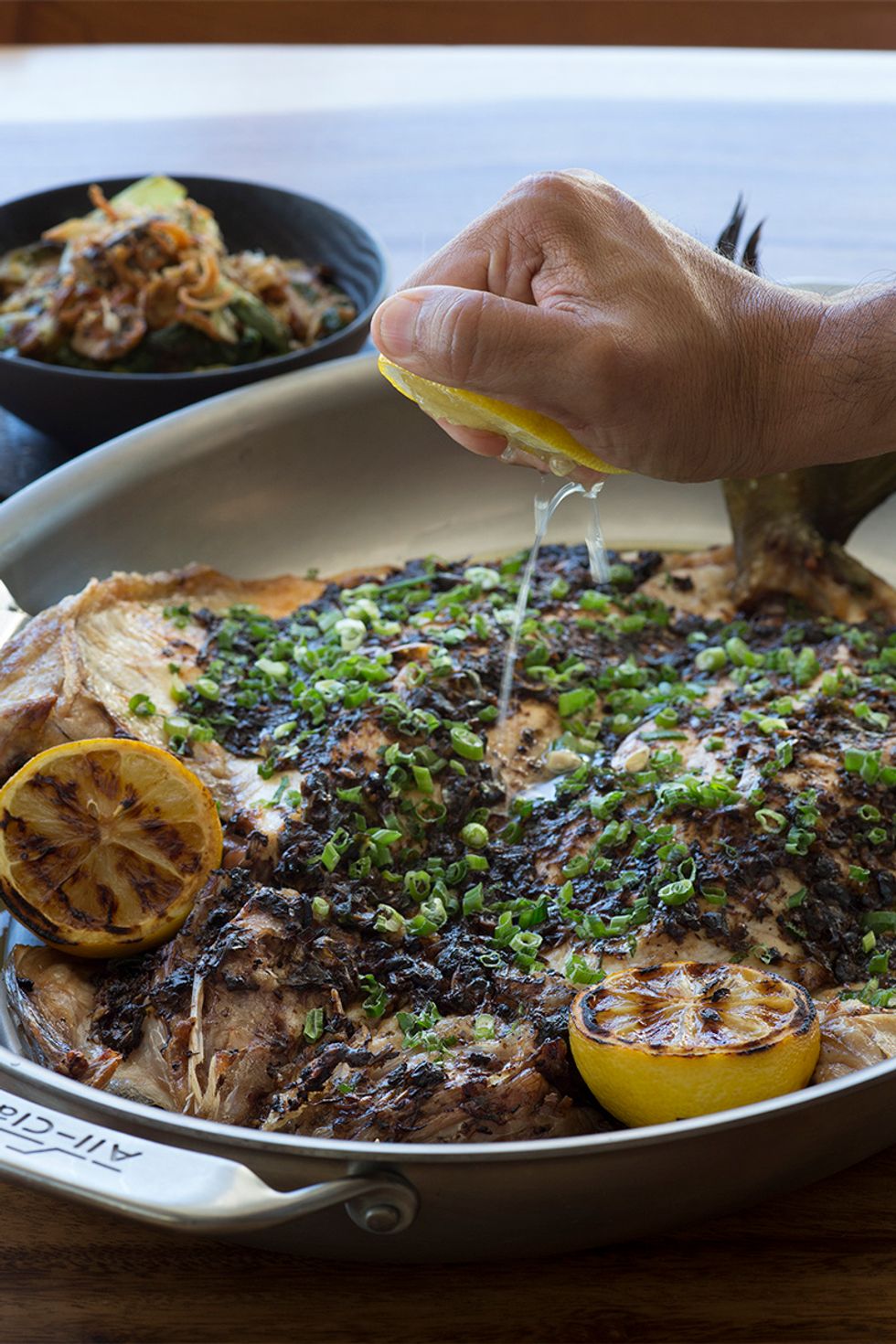
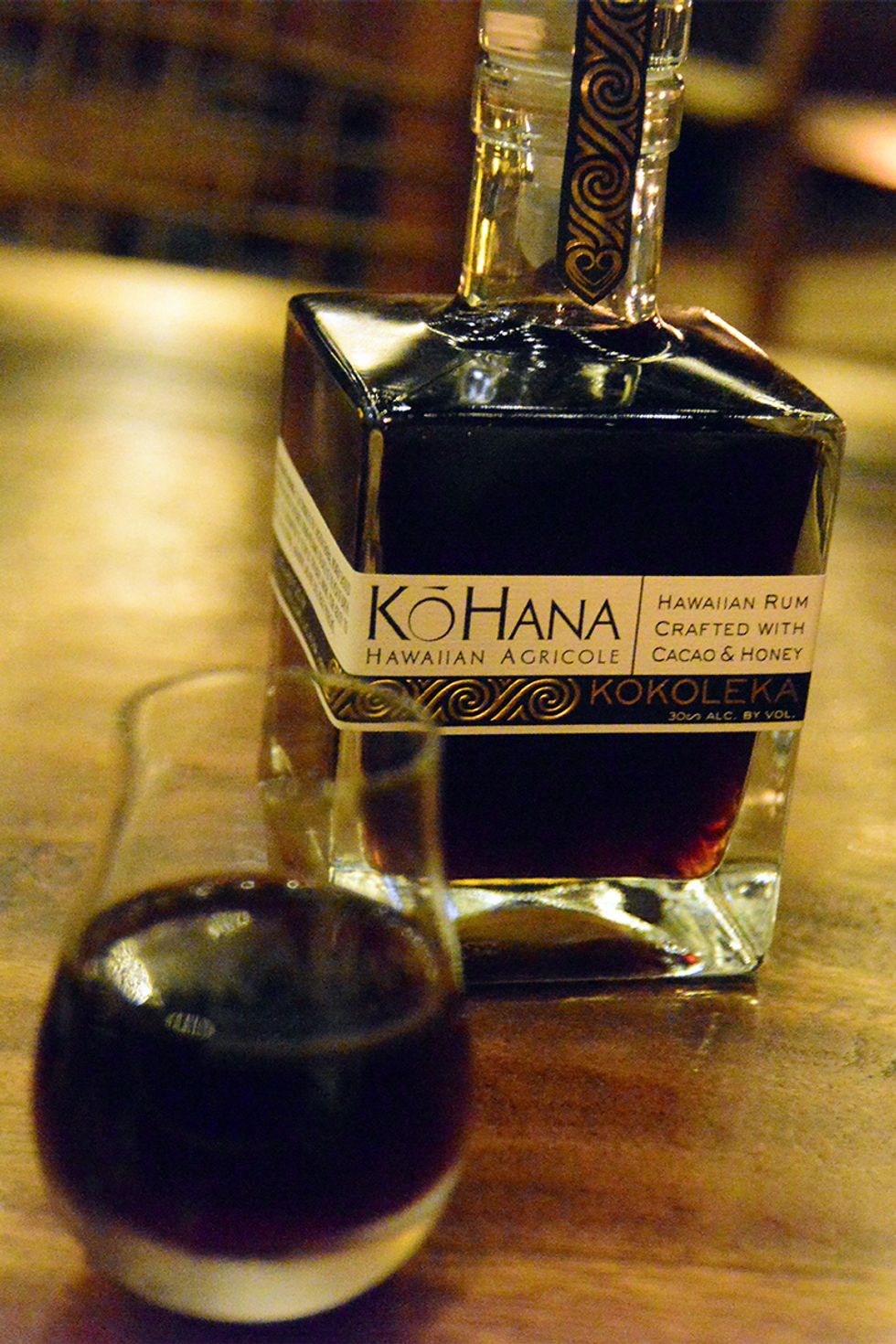
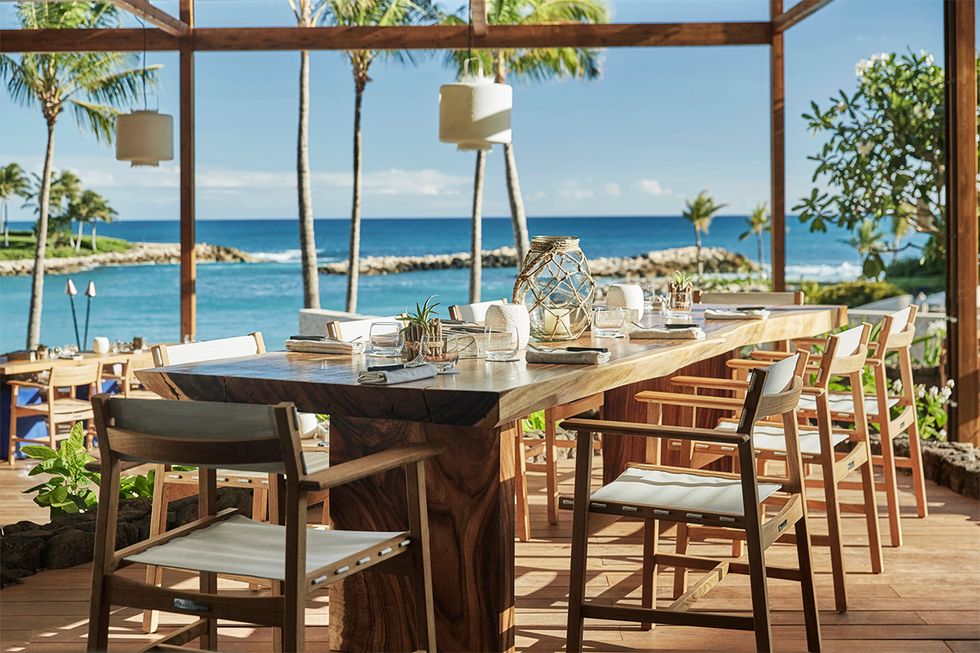
As we learned when we kicked off our al fresco dinner, even the smoke is local, as in a burrata salad with heirloom tomato, basil pesto, and shaved Maui onion—served in a vessel filled with a puff of smoke from smoldering shavings of kiawe, a type of mesquite that grows on Oahu and throughout the islands. The burrata was superb; the tomatoes intensely flavorful; both infused with just the right mesquite-y tang, and complemented by the bite of some wonderfully crisp croutons and fried basil leaves. Another starter was a tasty study in contrasts: creamy-buttery marinated Haas avocado garnished with house-made pickled vegetables, fried walnut, crisp shredded phyllo pastry, and a spicy hit of schug, a Middle Eastern condiment made with hot chiles, in this case jalapeños.
Wine-growing in Hawaii still has a ways to go, so at least for now, Mina's Fish House is relying on the more well-established regions, primarily California, France, and Italy. We began with a refreshingly crisp Simonnet-Febvre Crémant de Bourgogne Brut Rosé, and as the balmy night progressed, segued on to an intriguing, tropical-fruit-inflected Bellone from the Lazian winery Casale del Giglio, and an elegantly assertive Beaujolais-Villages from the revered vigneron Jean Foillard.
The restaurant's specialty is whole fish, and somewhat ambitiously, we ordered two. The first, a farm-raised yellowtail from Kona, was prepared in a classic Chinese style. Broiled, with a sauce of black beans, ginger and scallions, and served on a bed of garlic fried rice, mushrooms, and bok choi, the intensely savory-umami flavors were a perfect complement to the fish's rich fattiness.
The second fish, the size of a minor whale, was a moi, a delicacy once reserved for Hawaiian royalty. On this particular evening, it was served à la Punjab: rubbed with a ginger-garlic paste, dipped in egg white, and coated in a blend of chickpea flour, cumin, coriander, and ajwain seed. Deep-fried, the spice blend transformed into a flavorsome, crisp-flaky crust, while the fish inside remained delightfully tender and succulent. Savoring one bite after another, I understood immediately why Hawaii's royals wanted the moi all for themselves, and wondered if it might once again be raised right there on Oahu, if the traditional loko i'a were to come back to the island.
It's a funny thing: In the time leading up to this trip, I'd imagined coming back to San Francisco with no more than the usual volume of dinner notes, and possibly a tan. But on returning from the 50th state, my notebook was packed with enough lines of inquiry to keep me traipsing around Oahu for a month. Clearly, a return trip is in order. And whenever that should happen, I know just where I'll be going for dinner.
// Mina's Fish House, Four Seasons Resort at Ko Olina, Kapolei (Oahu), michaelmina.net; fourseasons.com.



